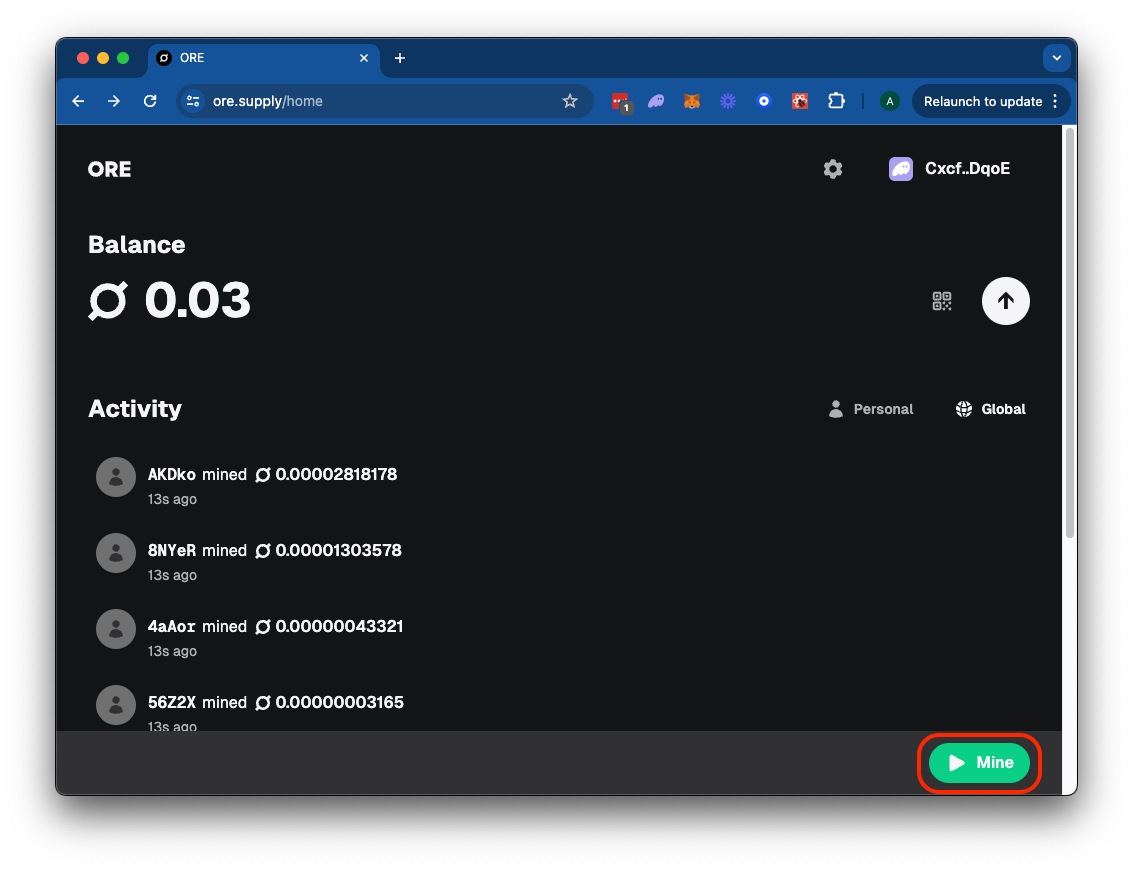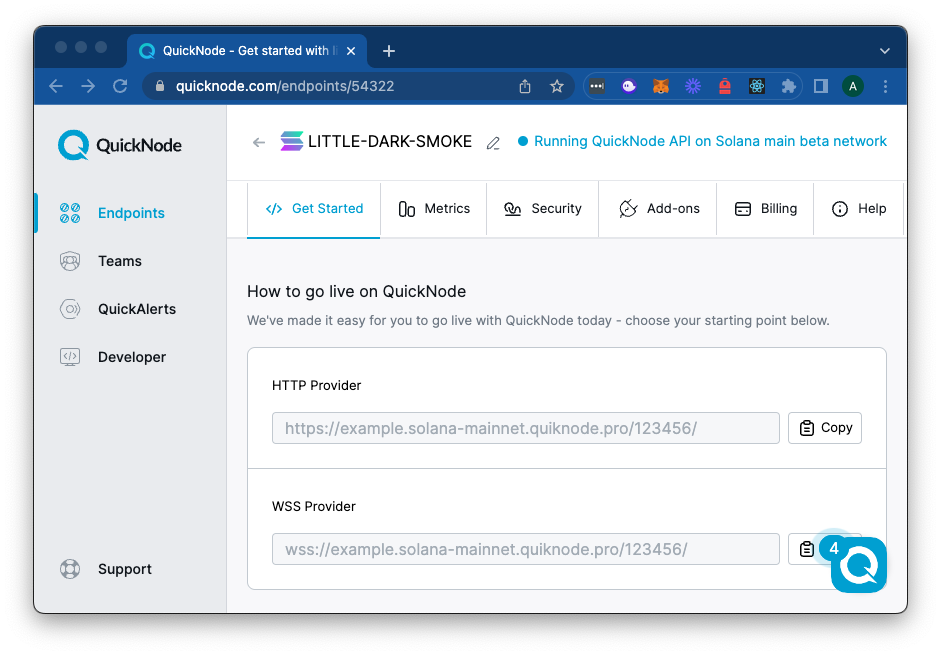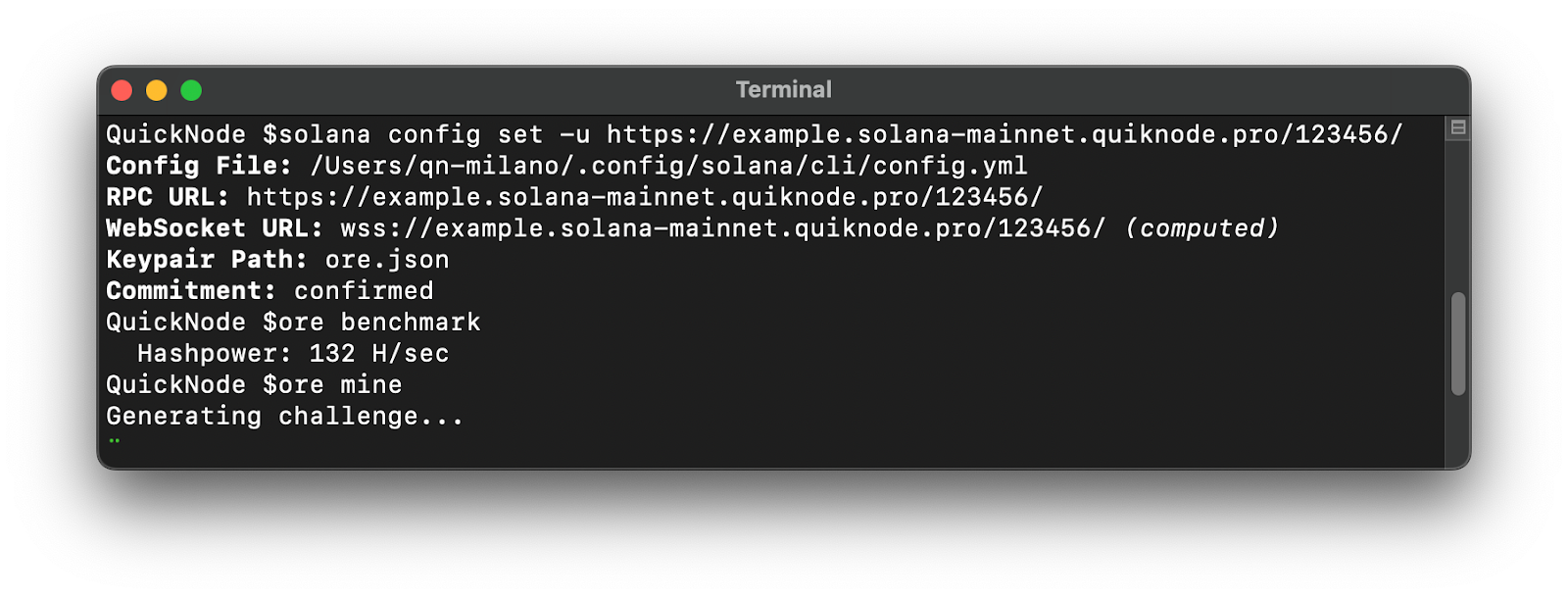5 min read
Bitcoin, proof-of-work, and crypto mining are transforming the world of finance, but new high-performance blockchains are creating space for innovations in proof-of-work that are shaking up the traditional mining landscape. Enter ORE, a revolutionary approach to crypto mining built on Solana. Let's dive into what makes ORE unique and how you can get started.
What is ORE?
To understand ORE, we first need to take a quick look at traditional Proof of Work (PoW) mining. In conventional systems like Bitcoin, miners compete against each other to solve complex mathematical puzzles. The first to solve the puzzle gets the reward, leaving others empty-handed despite their efforts. ORE takes a different approach that “guarantees everyone can participate in mining and win”. ORE is a Solana Program (or smart contract) that introduces a fair mining protocol that offers:
- Non-exclusive rewards: multiple miners can win rewards simultaneously.
- Personalized challenges: each miner receives a unique computational challenge. Any miner who solves their challenge will get a piece of the rewards supply.
- Low-cost on-chain verification: ORE mining operates on a proof-of-work algorithm called DrillX which utilizes Equihash, a battle-tested asymmetric proof-of-work algorithm (which allows for cheap on-chain verification) and Blake3 to provide a difficulty distribution.
- Rapid reward distribution: Built on Solana’s fast runtime, the algorithm allows for minute-by-minute mining “epochs” with near-instant challenge verification and reward distribution for miners.
- Stake-weighted rewards: miners can earn a multiplier on their mining rewards by staking ORE tokens. The miner with the most significant ORE stake will receive a 2x multiplier bonus, and all other miners will receive a 1x-2x multiplier based on their proportionate stake.
- Anti-sybil: By design, attempting to submit solutions more frequently than once per minute is counterproductive, as it will likely result in errors and mining fees without yielding additional rewards. To optimize their earnings, miners should focus on submitting the most challenging hash solution they can compute within each one-minute interval.
ORE has a fixed maximum supply of 21 million tokens. ORE will be distributed to miners at a rate of 1 ORE token per minute for ~40 years until the total supply is distributed.
How ORE Mining Works
- Personalized Challenges: Miners create a mining account. Each miner receives a unique computational puzzle to solve, ensuring a level playing field.
- The mining program programmatically sets a difficulty level for valid solutions.
- Higher difficulty levels require more computational work but potentially yield higher rewards.
- This system allows for dynamic adjustment of mining difficulty to maintain a consistent token distribution rate.
- Solution Discovery: Miners use their computational power to solve their personal challenges. The solution involves discovering a specific combination of numbers that meets certain criteria.
- Verification on Solana: When a miner finds a solution, they submit it to the ORE program on the Solana blockchain. The program quickly verifies the solution's validity and difficulty level.
- Fair Reward Distribution: Valid solutions are rewarded with ORE tokens. The reward system is designed to be proportional to the difficulty of the solved challenge with multipliers for users who have staked ORE tokens in the program. Rewards are adjusted each program “epoch” (1 minute) to achieve an average token distribution rate of 1 ORE/minute. This approach ensures that miners are compensated fairly for their computational efforts.
How to Get Started with ORE Mining
In the spirit of accessibility, the ORE protocol includes two open-source clients: a web application and a command-line interface. Getting started is easy!
Web App
You can mine ORE directly from your browser. All you need is a Solana Wallet (e.g., Phantom, Backpack, Solflare) and some SOL to cover account fees and transaction costs. Create an account at https://legacy.ore.supply/home and top your account with SOL. Once you are ready, just click “Mine”.

Command Line Interface (CLI)
If you are looking for higher performance, you may want to run the ORE CLI. To use the CLI, you will first need to ensure you have Rust and Solana CLI installed:
The Solana CLI should be configured to a local wallet with a positive Solana balance to cover account and transaction costs. If you do not already have one, you can run solana-keygen new to create one.
Finally, you will need an RPC endpoint to ensure your requests are efficiently sent to Solana's mainnet. You can create a free one with QuickNode here.
For ORE miners, QuickNode offers a competitive edge through its advanced Solana infrastructure:
🌎 High Transaction Success Rate: Our global network and cutting-edge hardware ensure your ORE mining transactions are reliably sent to the Solana network.
🚀 Proprietary Hyperscaling: Our custom solution outperforms standard Solana clients, delivering superior scalability, performance, and latency.
🛠️ Continuous Improvement: We're constantly enhancing our infrastructure:
- Expanding our global node network to meet growing demand
- Deploying in new regions with diverse infrastructure providers
- Implementing a Priority Fee API for optimal transaction handling during network congestion
- Investing in next-gen hardware and secure priority access to additional servers
- Refining our hyperscaling technology for improved transaction routing and support for emerging methods
From your QuickNode dashboard, you can copy the HTTP Provider link for your Solana Mainnet endpoint:

To set your endpoint, in your terminal, run:
solana config set -u https://example.solana-mainnet.quiknode.pro/123456/
You can now access Logs for your RPC endpoints, helping you troubleshoot issues more effectively. If you encounter an issue with your RPC calls, simply check the logs in your QuickNode dashboard to identify and resolve problems quickly. Learn more about log history limits on our pricing page.
Finally, you can install ORE CLI by following the instructions at https://legacy.ore.supply/download.
Once installed the miner should be ready to go using your Solana CLI defaults by running:
ore mine
You can also override your default RPC in the ORE CLI by using the --rpc flag like so:
ore mine --rpc https://example.solana-mainnet.quiknode.pro/123456/

Happy mining! If you have any questions, feel free to reach out to us on Discord or Twitter.
If you are looking to run an enterprise-scale miner, contact us to speak with a growth engineer.
Do More with ORE
Because ORE is an SPL Token on Solana, you can integrate it into your own projects and applications. Check out some of our other guides for some inspiration on how to get started:
- Create a tool to track mining balances.
- Create an ORE “Foundry” by burning ORE tokens.
- Create an ORE swapping tool using JupiterAPI.com.
- Create a Solana Program that uses ORE for payments.
Resources and More Information
- ORE Mining Basics: https://legacy.ore.supply/what-is-mining
- ORE Tokenomics: https://legacy.ore.supply/ore-tokenomics
- GitHub - ORE Mining Program: https://github.com/regolith-labs/ore
- GitHub - ORE CLI: https://github.com/regolith-labs/ore-cli
- GitHub - DrillX Mining Algorithm: https://github.com/regolith-labs/drillx
We ❤️ Feedback!
Let us know if you have any feedback or requests for new topics. We'd love to hear from you.